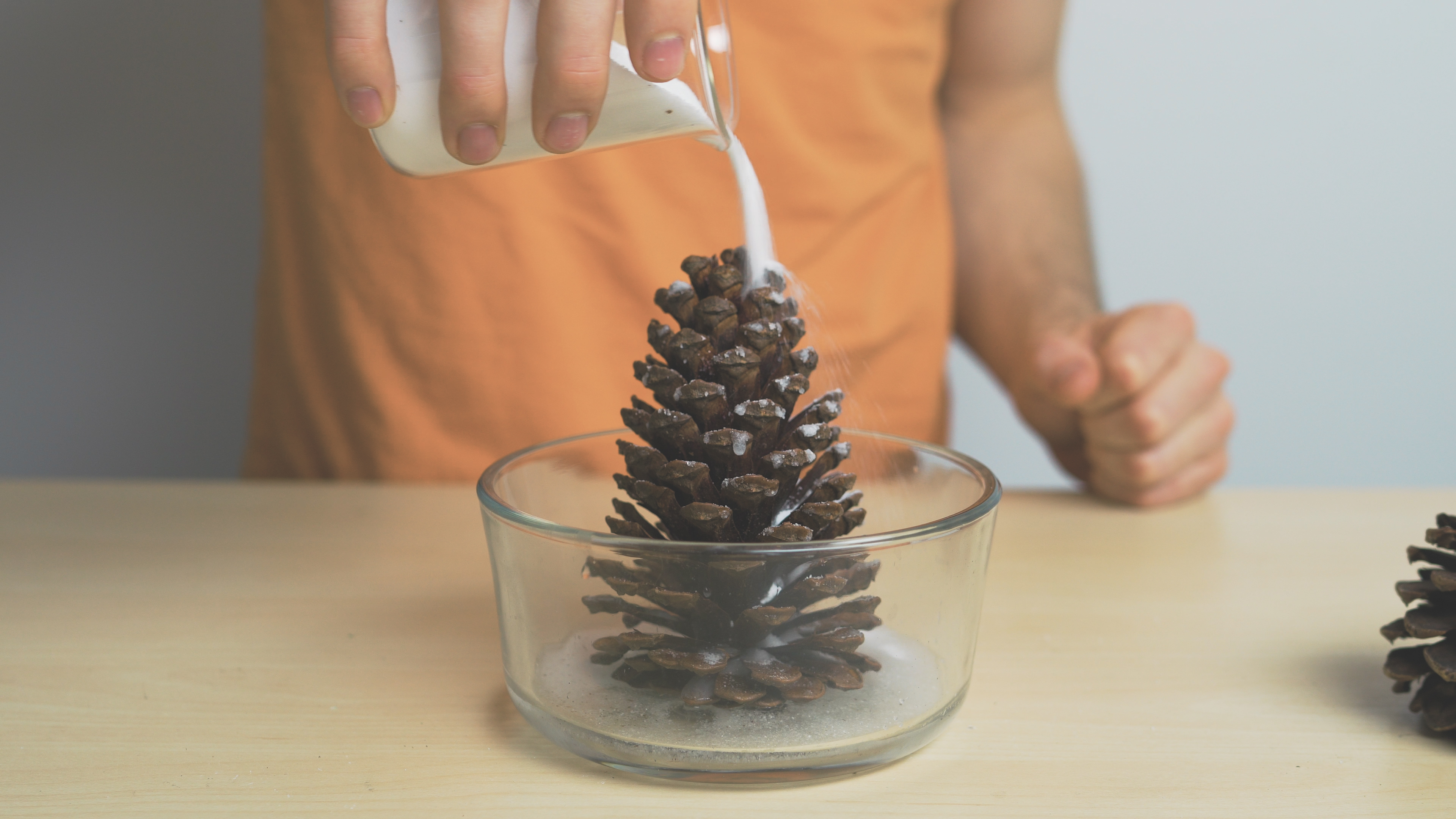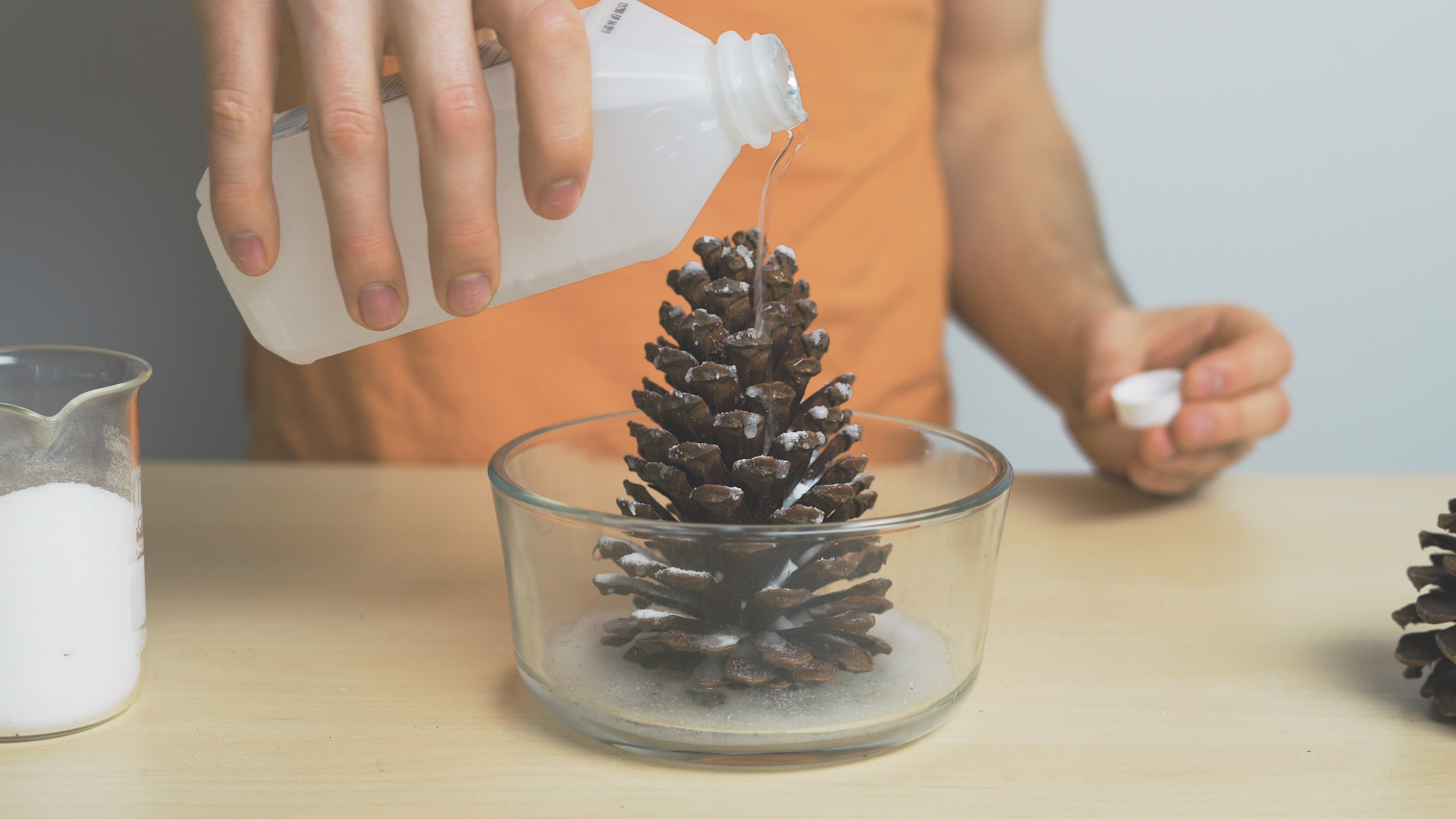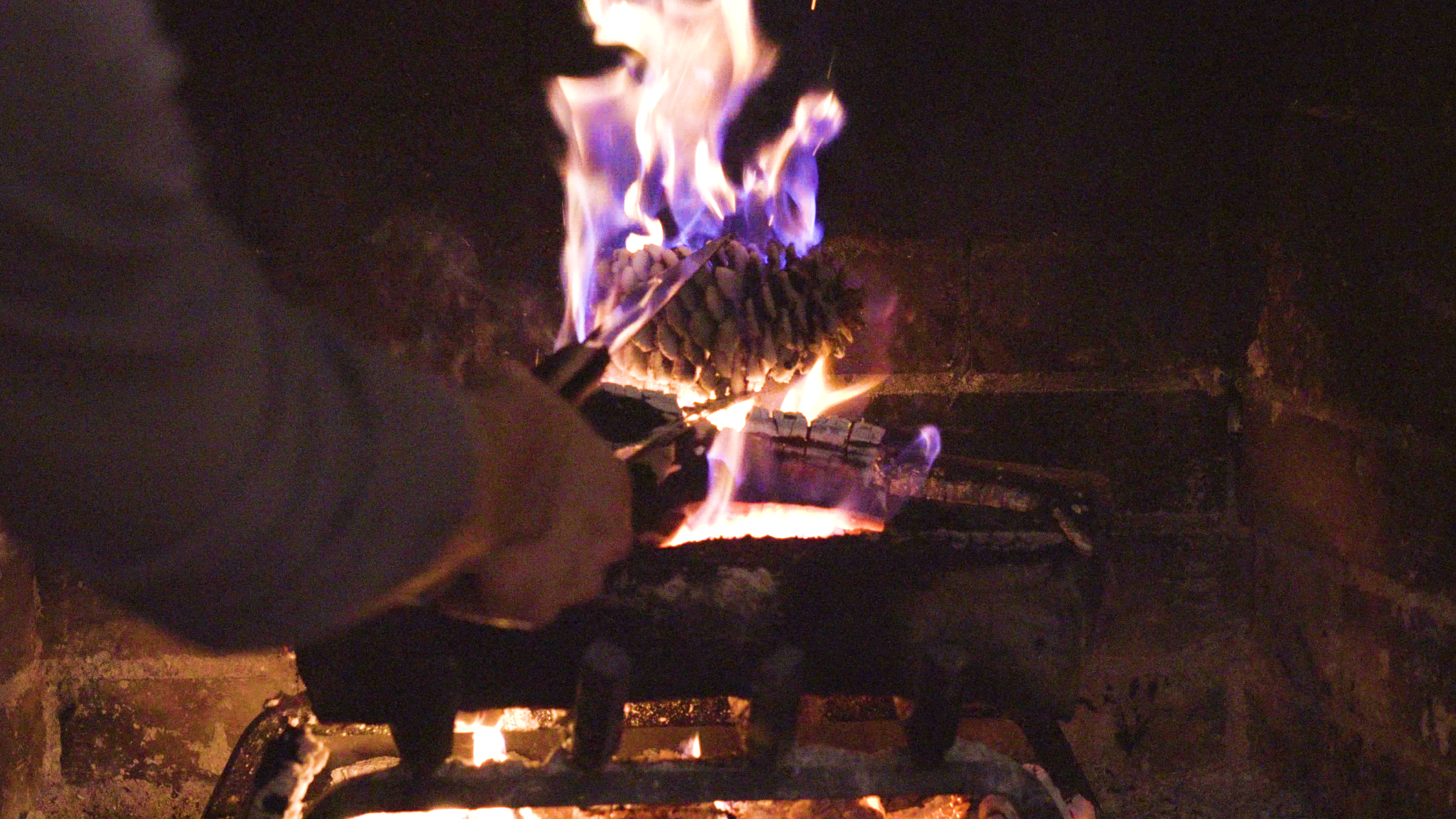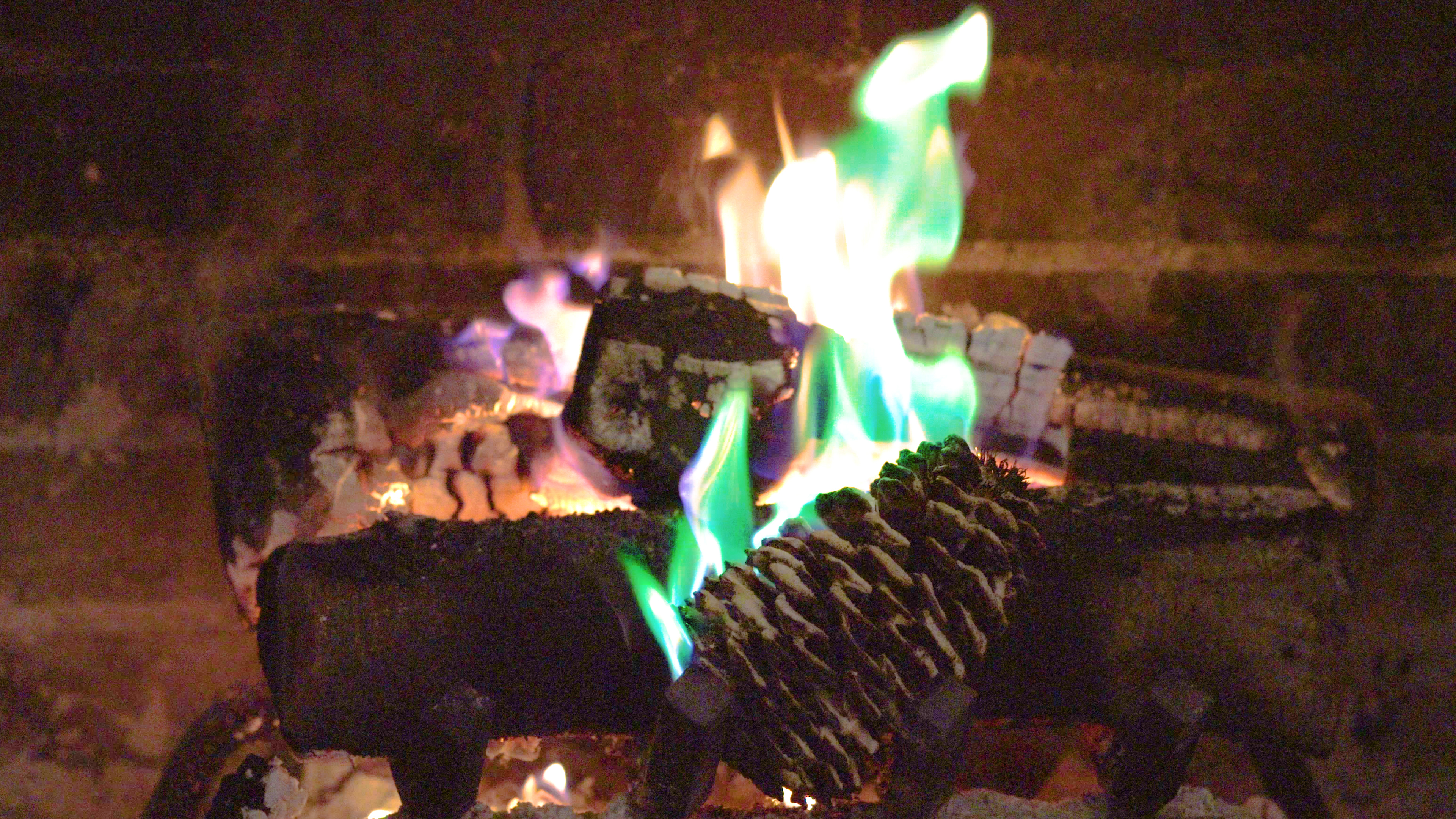Step-by-step tutorial
Warning
This experiment involves fire, and must be conducted by an adult, or with close adult supervision and assistance.
Step 1
Build a fire in your fireplace or fire pit. Place a bucket of water nearby to douse the pinecone once it's done burning.
To prepare your pinecone, place it in a dish and pour 91% isopropyl alcohol over the top. This will help the boric acid stick to the pinecone.
Step 2
Now sprinkle on some boric acid, until you have a good amount stuck to the pinecone.

Step 3
Finally, pour on a bit more isopropyl alcohol. You want just enough so that the boric acid is damp, but not so much that the boric acid is washed off the pinecone.
This isopropyl alcohol application will help the pinecone catch fire quickly. Without it, you may not see the green flames, since boric acid doesn't burn easily on its own. If you make your pinecones ahead of time, just pour on a little extra isopropyl alcohol just before tossing them onto the fire.
Step 4
Very carefully, use a pair of fireplace tons to place a pinecone on the fire. You should see the flames flare up yellow first, and then turn green! If you don't see the green, try moving the pinecone a bit. It's easier to see the green flame if the pinecone is off to the side, not in the middle of the orange flame from the logs.

Step 5
You can add more pinecones if you want, and enjoy the amazing green flames!
When you're done, make sure to douse the pinecones in a bucket of water, and safely extinguish the fire.
Learn more
What's going on?
Many different elements burn different colors. For example, sodium burns yellow, and copper burns blue (or blue-green). You saw green flames because the boric acid you used contains the element boron, which burns green.
In fact, the flame test is a real tool that analytical chemists use to identify materials. Observing the color of the flame provides a hint at the elements that make up an unknown compound.
Different elements produce different colors of flame because they have different numbers and energies of electrons. Atoms are made up of a positively charged nuclei surrounded by negatively charged electrons. The electrons exist in different locations around the nucleus, called orbitals. When the atom is heated up, the extra energy pushes some of the electrons from a lower-energy orbital to a higher-energy one.
An electron in a higher-energy orbital is kind of like a ball at the top of a hill; it wants to roll back down. When the electrons fall back into their lower-energy orbitals, the extra energy is released in the form of light. Depending on the element, different amounts of energy are released, creating different colors of light!
